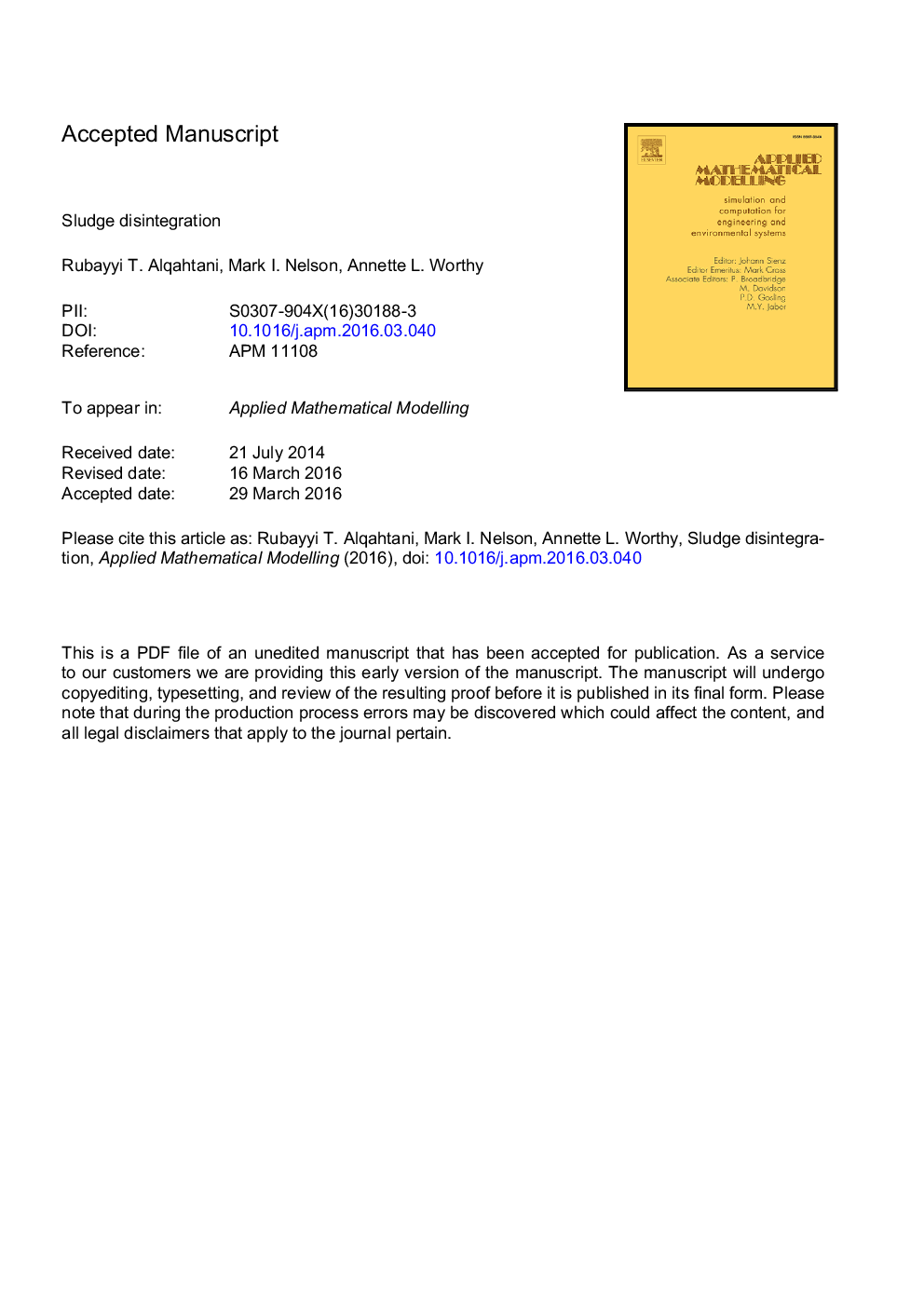| Article ID | Journal | Published Year | Pages | File Type |
|---|---|---|---|---|
| 5471325 | Applied Mathematical Modelling | 2016 | 35 Pages |
Abstract
In this study, we investigate a model of an activated sludge process connected to a sludge disintegration unit. We formulate a model of a sludge disintegration unit where disintegration processes occur at a finite rate. We then take an appropriate asymptotic limit to obtain a model where these processes occur infinitely rapidly. We use our limiting model to show that a previously proposed infinite-rate model is formulated incorrectly. Our principle aim is to investigate how the disintegration rate in the sludge disintegration unit affects the formation of sludge in the reactor. In the limiting case of an infinite disintegration rate, we show that there is a critical value for the sludge disintegration factor, above which the reactor system is guaranteed to be in a state of negative excess sludge production. For the case of finite rate processes, we show that if the disintegration rate is sufficiently high, then the error when assuming an infinite rate is less than 10% of the exact value using a finite rate. In these cases, the behavior of the reactor can be estimated within experimental error by assuming an infinite rate. We also show that if the reaction rate in the sludge disintegration unit is sufficiently small, then there is no longer a critical value for the sludge disintegration factor above which the reactor operates in a state of negative excess sludge production for all residence times. Instead, negative excess sludge production can only be achieved when the residence time is sufficiently large.
Related Topics
Physical Sciences and Engineering
Engineering
Computational Mechanics
Authors
Rubayyi T. Alqahtani, Mark I. Nelson, Annette L. Worthy,
